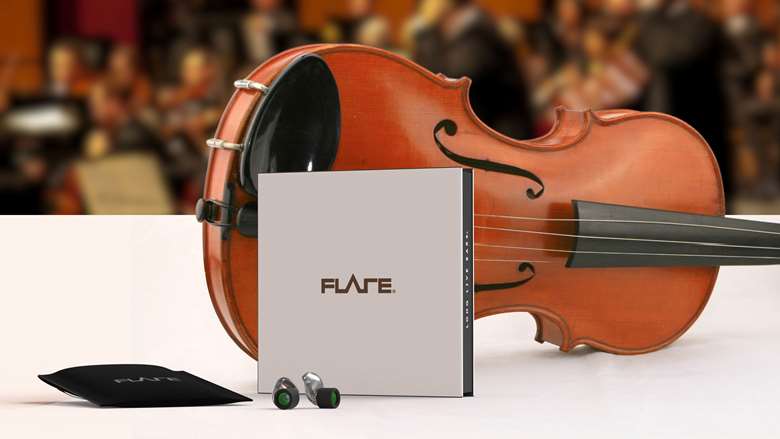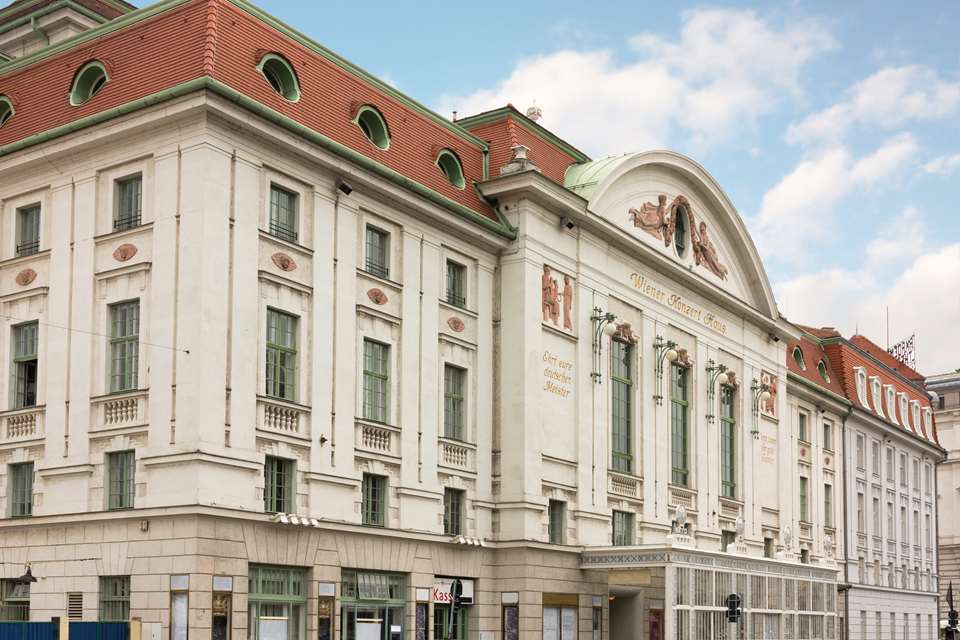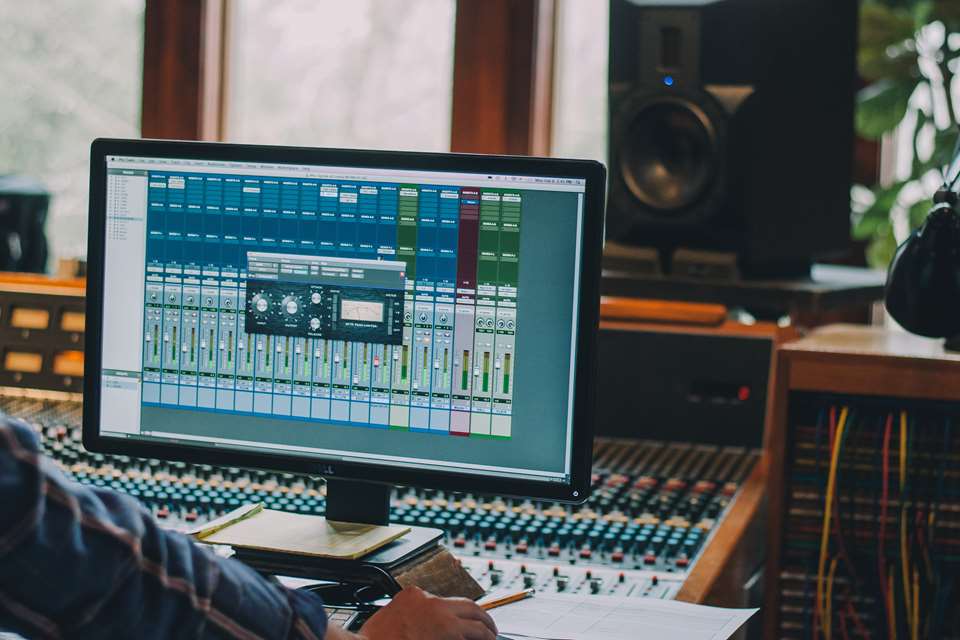Audio with a flair for innovation
Florence Lockheart
Friday, May 23, 2025
Flare Audio has set out to disrupt the audio industry. Founders Davies and Naomi Roberts sit down with Florence Lockheart to talk about why their technology has the potential to revolutionise the way we listen

Say you’ve got a craving for Der Rosenkavalier – which recording comes to mind? Are you reaching for Georg Solti’s 1968 recording with the Vienna Philharmonic, lauded in Gramophone as ‘the best conducted’, or Bernstein’s divisive 1971 version? That question might have boiled the blood of some recording fanatics before we even begin to wade into the thousands more recordings of Strauss’ comic masterpiece, but it also raises a more important question: we pay a lot of attention to what we listen to, but how often do we consider how we listen? This was the question on the mind of husband-and-wife duo Davies and Naomi Roberts when they founded Flare Audio, a company now making waves within the audio industry and recently winner of the King’s Award for Enterprise.
Davies and Naomi launched the company in 2010 as an audio manufacturer and hire company. Davies had been working as a firefighter, while Naomi was a youth officer, organising band nights for local under-18s. This led to the couple’s first venture into ‘Rock and Roll’, hiring out loudspeakers for music events. ‘At first we thought, “This is just a bit of fun”,’ Davies tells me. ‘But within literally two weeks of our first gig, we were opening up the main stage of Isle of Wight festival with Cooper, the first unsigned band in the top 40, performing for 50,000 people.’ The duo hasn’t slowed down since. They were quick to recognise the lack of precision and reliability within the industry, Davies explains: ‘Everybody in that industry was guessing, and that nobody had developed sound technology that actually worked accurately. Basically, everybody is making loudspeakers, earphones and headphones by making them resonate like an instrument would resonate.’ With Flare, Davies and Naomi decided to approach audio from a different angle. ‘I started thinking at a particle level, by imagining particles as dots you can start to visualise where real problems are going to happen,’ explains Davies. ‘We started developing loudspeakers based on that principle, using vortices to silence the rear radiation of a driver and different technologies that enabled a much more accurate representation of sound.’ This physics-based approach has informed Flare’s product development across the last 15 years, but although audio equipment designed using the science of sound might sound like a no-brainer, Davies and Naomi found that the rock and roll industry wasn’t quite ‘ready for disruption’. So they pivoted, first to cinema sound, then to consumer audio where they found their niche.
"You can hear the resonances of your instrument like you've not heard before"
Flare’s first consumer earphone, the R2, was the company’s initial foray into trying to create ‘sound without resonance’, as Davies puts it. After the launch, the team began to investigate resonance reduction in earnest. ‘I became very aware that the human ear is where all of the problems are,’ recalls Davies. ‘The ear is essentially a cluster of shells, and when you play any instrument a shell creates a resonance, so our ears are distorting sound massively. A violin, cello, brass instrument, or even a voice will create lovely resonances that we want to listen to, but we shouldn't be re-resonating that beautiful sound.’ The solution? According to the Flare team it’s a tiny piece of ‘in-ear tech’ called Definition (pictured below) which uses geometry to passively perfect the way the ear receives sound without the need of a driver. ‘It includes two mirrors so when a sound causes the particles vibrate they move and hit the mirrors, but retain their particle line information as they travel into the ear and the impulse response remains accurate. It basically means we can get a linear, high-definition frequency response into the user’s ears without decayed distortion.’

So how can this help musicians? ‘It will vastly improve the ability of the ear to receive detailed sound information,’ says Davies. ‘Our ears have not evolved to listen to music – they have evolved to respond to stress in the wild. But if you put Definition in your ears and play a violin, you can hear the resonances of your instrument like you've not heard before, you'll have detailed information on the strings – how they're interacting with each other, if one's slightly out of tune, perhaps – to a higher degree, and it will enable you to work on that sound to a far higher degree of accuracy.’ The Flare team are also keen to see the technology deployed across the orchestra to unify every player’s perception of their sound. And, although the ear inserts aren’t noise reducing, Davies is keen to share their protective potential for musicians: ‘It can be very sharp and painful on your hearing if you're in the wrong area of an orchestra, and while Definition won't protect your ears, it will take away the sharp peakiness of the sound so you'll be able to hear more depth to the whole orchestra, rather than just the brass that's in your ear,’ he explains. For musicians who have experienced a longer orchestral career – and the hearing loss that comes with it – Flare has found that Definition can, to a certain extent, help mitigate hearing loss by ‘reducing the natural noise floor of the ears’ and ‘removing all of the background noise and the resonances that we don't need’. ‘We've done some demos with DJs who have been around since the early 90s,’ Naomi adds. ‘It will depend on the individual, and how their ears are, but from what we've seen so far, anybody who has some form of hearing damage can hear those frequencies again with Definition.’
"The ear is essentially a cluster of shells, and when you play any instrument a shell creates a resonance, so our ears are distorting sound massively"
This simple but ‘disruptive’ technology is the result of many years of research and development (R and D) and thousands of prototypes. This iterative approach is born out of Flare’s beginnings as a crowdfunding project on popular platform Kickstarter. ‘Crowdfunding was where we did all of our learning about how to be a B to C [business to consumer] company,’ Naomi explains. ‘Up until that point, we had been working with festival organisers and promoters. Then suddenly we had this consumer product, and we had to learn how to deal with customer service questions, how to ship products, what services to use, the picking and packing technology, the website, advertising, instruction manuals – all of this stuff that we had never had to consider.’ The company launched its first consumer earphone via a crowdfunding project in 2015. ‘Crowdfunding was fairly new,’ recalls Naomi, ‘and most backers were very keen to get as much information from the company as possible. We became very aware of the value of attention to detail, and clear, concise communication.’
"We're not just another company that's invented a product, and now it's fixed – we’re all about developing"
 Nowadays, Flare’s crowdfunding roots are evident in the company’s Flare Labs initiative, which sees the release of a limited run of 3D-printed prototype models made available to users on an early access scheme, allowing the team to test out new technologies and models with consumers before they move to main production. ‘‘It's our way of enabling our customers to be part of that journey with us,’ Naomi tells me. ‘It gives them the opportunity to get involved with the product right from the start.’ For Davies, the value of the Labs project goes beyond practicality: ‘Flare Labs is important, because it really represents who we are. It allows us to show people that we're not just another company that's invented a product, and now it's fixed – we’re all about developing. You feel like you've got people behind you, rather than just fighting to get people's attention. It drives you.’
Nowadays, Flare’s crowdfunding roots are evident in the company’s Flare Labs initiative, which sees the release of a limited run of 3D-printed prototype models made available to users on an early access scheme, allowing the team to test out new technologies and models with consumers before they move to main production. ‘‘It's our way of enabling our customers to be part of that journey with us,’ Naomi tells me. ‘It gives them the opportunity to get involved with the product right from the start.’ For Davies, the value of the Labs project goes beyond practicality: ‘Flare Labs is important, because it really represents who we are. It allows us to show people that we're not just another company that's invented a product, and now it's fixed – we’re all about developing. You feel like you've got people behind you, rather than just fighting to get people's attention. It drives you.’
While Flare’s products are designed, made, tweaked and remade time and time again, the company is now comfortably its final form – but Naomi and Davies remain very aware that the audio sector remains nebulous. ‘The sound industry is so miss-sold and there are so many problems in this field,’ Davies explains. ‘They're selling £50 grand audio cables that are cryogenically frozen to create “better sound quality”, but it's just a whole load of rubbish. That’s what we're up against that in terms of making a product.’ Davies and Naomi are keen to prove that Definition is different: ‘This is not a “magic product”, this is a passive, simple geometry change which is tuning your ears,’ reassures Davies. And the Flare team puts their money where their mouth is, offering a 100-day return policy on every product. ‘We don't want anybody to have a product that doesn't work for them,’ Naomi tells me earnestly. ‘We want people to believe in it.’
Images courtesy of Flare Audio




